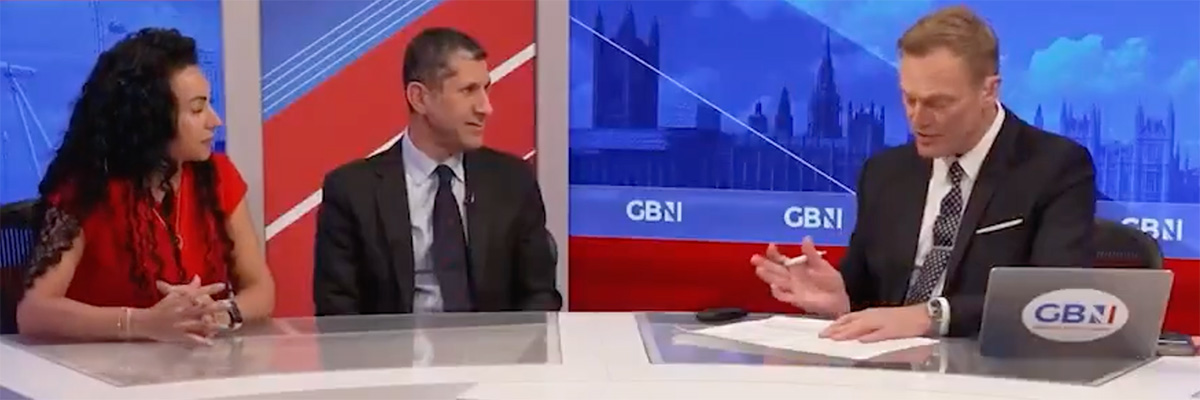What just happened?
Well, having said in the previous post that there can’t possibly be anything more boring than a county council election we are ready to revise our position – just a little. In that post we said: “…a swing to Reform large enough to displace the Tories in Hertfordshire would be a real political earthquake.”
Well, that earthquake happened. The Tories have been displaced and will be replaced in County Hall not by Reform but by a coalition that must now be assembled and will presumably include the largest party – the Liberal Democrats – plus the Greens and Labour. On the face of it a leadership coalition will need to include all three otherwise it won’t be big enough to overcome a possible alliance of Conservative and Reform councillors (whether that particular coalition of frenemies would even be possible is another matter).

It’s not the first time an election has resulted in ‘no overall control’ here but, since the County Council was set up in 1974, this is only the second time the Conservatives have been out of the leadership coalition.
Here in the Watling division, there’s been substantially less drama: Caroline Clapper is still your county councillor. Her majority has been reduced but she’s still very comfortably in place.

Reform’s performance here in the Watling division is a real challenge to the historic balance and puts the party comfortably in second place. Here’s the history:

You’ll see an essentially continuous growth in the Tory share since the origin of the council in the 1970s, with a handful of dips along the way. You’ll see a very steep decline in the Labour vote since a 1993 high point which reflects the trend across the whole UK in that period: Labour has essentially retreated into the big cities, leaving the Tories to dominate rural England and the small towns (with various local exceptions, usually run by the LibDems).
Down near the bottom of the chart you’ll also see a handful of coloured blobs. The pale blue one to the right is last week’s Reform performance and, interestingly, the purple one in 2013 is UKIP, scoring a share here in Watling of 16.5%, essentially the same as Reform’s share last week – a reminder that UKIP’s rise in England, although it ultimately fizzled out, felt pretty climactic too, back then.
Reform’s 14 seats on the council pretty much reflects the average across the English councils included in the election – and the three-way division in percentage terms – the three largest parties on 26%, 26%, 24% – essentially explains the problem presented to the big parties by Reform’s arrival.

The picture is obviously much more dramatic at the county level than at the level of our own division, Watling, where Tory control is still essentially total. In the chart you’ll see the Liberal Democrats surge past the Tories for the first time in the County Council’s history, leaving Labour in the dust (and the Greens catching up with Labour). Reform bounces to 14% of the vote, better than for any populist party in the county’s history but some way behind the party’s average across all the areas where elections took place.

What looked, until last week, like one of the Toriest places in England, now looks like a much more mixed environment, an effect seen across all the authorities in which elections took place. This is likely to be particularly bad for the Conservatives, of course – Reform’s target electorate is essentially theirs and they will now have to fight it out over one end of the political spectrum – we can’t escape the conclusion that the arrival of three-, four- or five-party politics in Britain is going to change things for everyone – even in Radlett. We’re not in Kansas any more.
- You can get all this data from a number of excellent online sources, these days, of course, including the BBC’s local election pages; the County’s own results pages (which are much better than they used to be) and Wikipedia, which is, as you’d expect, the absolutely definitive source for election data across the country – and across time. However, there is only one place on the whole Internet where you’ll find all voting data – going back to the origins of the constituencies, divisions and wards involved – for Radlett, and that’s Radlett Wire’s own big election spreadsheet, which is free to use and download as you want.
- Other really good sources during this election period in Hertfordshire have been the always excellent Your Harlow online local paper (and Harlow isn’t in Hertfordshire); Bishop’s Stortford’s Independent; Chris Day, a reporter covering politics in Hertfordshire for Reach who is part of the BBC-funded local democracy reporting scheme and the Watford Observer, plugging away in an increasingly difficult local media market.
